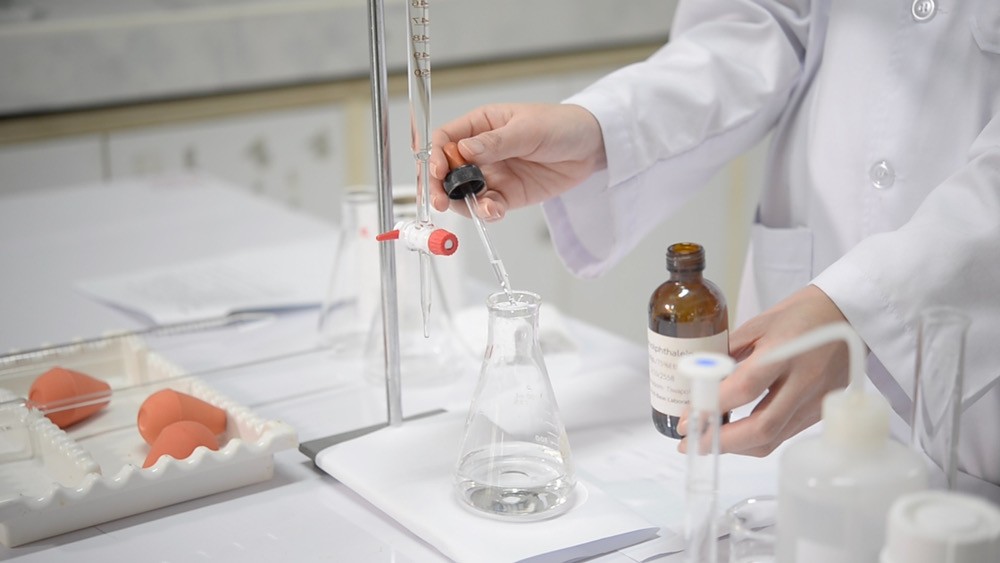Table of Contents
Standard Solutions:
Standard solutions are the solutions that are prepared with known strength. The accurate weight of very pure reagents of high stability is taken, dissolved, and diluted to the exact known volume, and concentration is calculated on a theoretical basis. The calibration of other solutions and reagents depends upon the accurate strength of these solutions. Substances having typical characteristics are used to prepare the standard solutions and these substances are known as standard substances.
There are two types of standard substances.
- Primary standards
- Secondary standards.
Primary Standards
Those substances which can easily be obtained in highly pure and crystalline form and used in the preparation of standard solution are known as Primary Standard Substances.
Accurately weighed quantities of these primary standards are used in the standardization of solutions of unknown strength.
E.g. Oxalic acid, sodium carbonate, etc.
The commonly used primary standard substances are:
- Acid-base titrations: Sodium carbonate, potassium hydrogen phthalate, succinic acid, benzoic acid, oxalic acid, and adipic acid.
- Redox titrations: Potassium dichromate, potassium bromate (KBrO3), potassium iodate, sodium oxalate, arsenic oxide.
- Precipitation titrations: Sodium chloride, potassium chloride, potassium bromide, silver nitrate.
- Complexometric titration: Various pure metals such as zinc, magnesium, manganese, and salts such as lead nitrate, calcium carbonate, etc
Properties of Primary Standards:
They are obtained easily in pure form (100.00%) and it is easy to purify, dry and preserve in a pure state.
- They are stable to atmospheric conditions and not decomposed by atmospheric conditions. They are not hygroscopic, or deliquescent in nature.
- They have a high equivalent weight in order to reduce the effect of weighing errors. In weighing a greater amount of substance, the relative error will be smaller than that for a small amount
- The reaction with the standard solution is stoichiometric and practically instantaneous.
- The reaction is amenable to the use simple indicator to determine the end point of the titration.
- There will not be any difference between the endpoint and theoretical equivalence point i.e. titration error will not be there.
- They are readily soluble in experiment solvents.
- They do not have water of hydration so the composition of the solid does not change with variation in relative humidity.
It is not always possible to satisfy all the requirements of a primary standard but the properties mentioned above should be met at all times as closely as possible. In practice, the ideal primary standard is difficult to obtain, and hence, a compromise between the above requirements is usually necessary.
Secondary Standards
These are the substances used for the standardization and whose concentration has been determined by comparison with the primary standard. As the number of primary standard substances is limited, a substance with less but known purity is used in the standardization process. These substances are known as secondary standards.
Unlike primary standards, the concentration of solutions of these substances changes with time, thus they need to be standardized every day before use. For example, KMNO4 is hygroscopic hence its concentration varies with time. So it is considered the secondary standard solution.
Properties of Secondary Standards:
- The concentration of their solutions changes with time.
- They are prone to undergo photochemical decomposition or hydrolysis and they may be hygroscopic.
- They may not be available in pure form and may react with organic matter present in water.
- The reaction might not be rapid or stoichiometric.
- It is difficult to maintain these in a pure state as drying is difficult due to low fusion points.
- Usually, they are not readily soluble in the experiment solvent. e.g. an unknown solution of hydrochloric acid can be standardized by two methods:
(a) By using Analar-grade Na, CO; [primary standard].
(b) By using a standard solution of NaOH [secondary standard].
Make sure you also check our other amazing Article on: Techniques In Pharmaceutical Analysis
